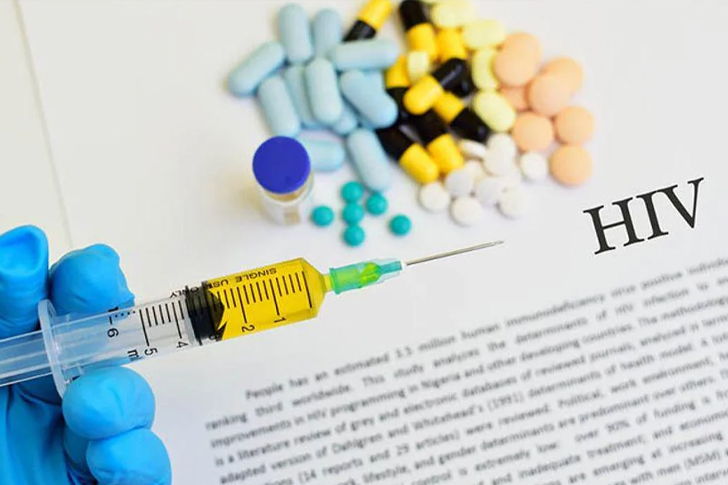Understanding HIV: 5 Essential Facts
HIV (Human Immunodeficiency Virus) has been a prominent global health issue since it was first identified in the early 1980s. Despite years of research and education, many misconceptions and stigmas still surround this condition. Understanding essential facts about HIV can help in demystifying the virus, reducing stigma, and promoting better health outcomes for those affected. Let’s delve into five crucial aspects of HIV that everyone should be aware of.

1. The Science of HIV
HIV targets the immune system, primarily affecting CD4 cells (T cells), which are crucial for immune defense. Once the virus enters the body, it integrates its genetic material into the CD4 cells and begins to replicate. This replication process eventually destroys the host cells, weakening the immune system over time. Without treatment, HIV can lead to AIDS (Acquired Immunodeficiency Syndrome), the most severe phase of HIV infection where the immune system is badly damaged.
As of 2021, approximately 38 million people worldwide were living with HIV. Despite its widespread prevalence, advancements in treatment have transformed HIV from a fatal diagnosis to a manageable chronic condition. The introduction of Antiretroviral Therapy (ART) in the mid-1990s has been particularly groundbreaking, allowing people with HIV to live longer, healthier lives.
2. Modes of Transmission
HIV is transmitted through contact with infected bodily fluids such as blood, semen, vaginal and rectal fluids, and breast milk. The most common modes of transmission are unprotected sexual contact, sharing injection drug equipment, and from mother to child during pregnancy, childbirth, or breastfeeding. It’s crucial to note that HIV is not transmitted through casual contact such as hugging, shaking hands, or sharing food and water.
Ensuring the use of preventative methods is vital in stopping the spread of HIV. These methods include using condoms, taking pre-exposure prophylaxis (PrEP), and ensuring that HIV-positive mothers receive proper treatment during pregnancy. Comprehensive sex education and needle exchange programs are also critical in reducing transmission rates.
3. Diagnosis and Treatment
Early detection of HIV is essential for effective management and treatment. HIV testing is recommended as part of routine health care. Once diagnosed, individuals can start ART, which involves taking a combination of HIV medicines every day. ART helps reduce the virus level, or viral load, to an undetectable level, which means the virus remains in the body but at very low levels, significantly reducing the risk of transmission and helping the immune system to recover and stay strong.
Statistics have shown that people on ART who maintain an undetectable viral load have virtually no risk of transmitting HIV to their HIV-negative partners through sex. Moreover, life expectancy for those treated early is now approaching that of the general population, emphasizing the effectiveness of modern HIV treatments.
4. Prevention Efforts
Global efforts to prevent HIV transmission have been multifaceted, including educational campaigns, widespread testing, and the promotion of safer sex practices. PrEP has proven to be a game-changer in HIV prevention. This daily medication is highly effective in preventing HIV infection in at-risk populations. According to the World Health Organization, widespread availability and use of PrEP has the potential to prevent millions of new HIV infections and deaths worldwide.
Moreover, global initiatives such as the President’s Emergency Plan for AIDS Relief (PEPFAR) and the Global Fund to Fight AIDS, Tuberculosis, and Malaria have made significant strides in providing treatment, promoting HIV awareness, and funding prevention methods in regions heavily impacted by the virus, especially in sub-Saharan Africa.
5. Social and Economic Impact
The impact of HIV extends beyond just health. Economically, the virus can have devastating effects on families as they cope with medical costs and the loss of labor. Moreover, the stigma and discrimination associated with HIV can lead to social isolation and psychological distress, affecting the quality of life and mental health of those infected and their families.
Understanding and addressing these broader implications is part of developing effective public health strategies. It is also where community support networks play a crucial role. These networks provide essential services including social support, counseling, and legal aid to combat stigma and discrimination while promoting a more inclusive society.
In conclusion, while much progress has been made, the fight against HIV/AIDS is not over. Continued efforts in education, prevention, and treatment, coupled with global solidarity and understanding, remain crucial to combating this epidemic. With continued vigilance and community engagement, there is hope that we can achieve the global goal of ending HIV/AIDS as a public health threat by 2030.







Recent Comments